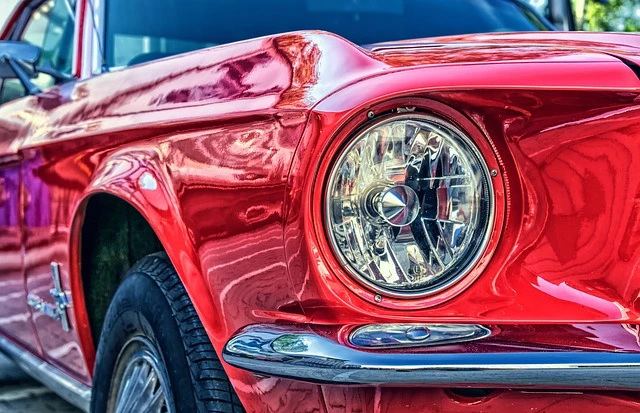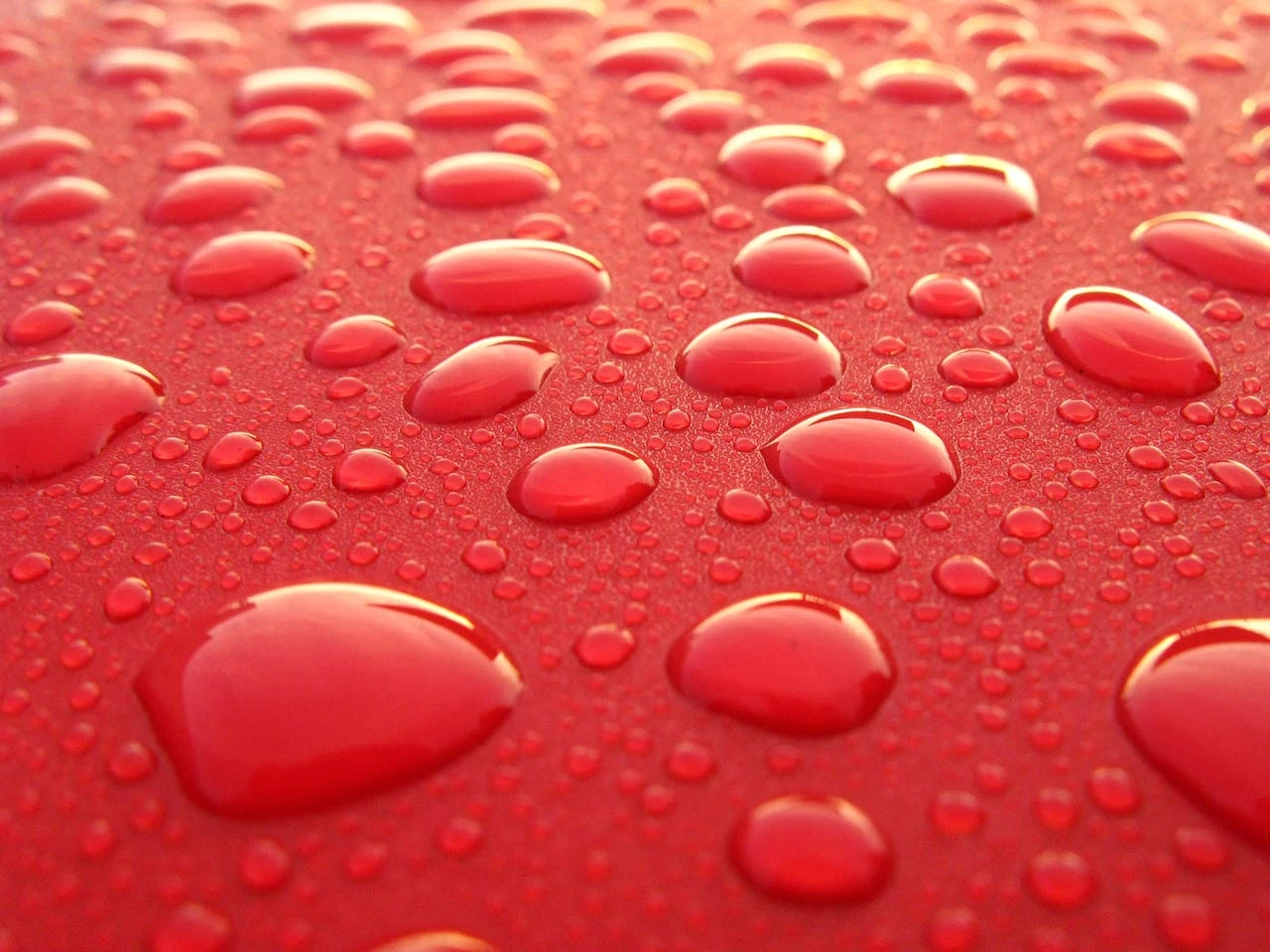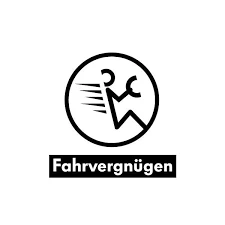blog
Hydrogen-Based ICE?

How does a 2.0-litre 4-cylinder engine boasting 302 kW of power at 6500 rpm and 500 Nm of torque between 3000 and 4000 rpm sound to you? To my ears, this is pretty impressive stuff on any given day.
Big entities AVL Racetech and Hungarian HUMDA Lab have used their know-how to work on advancing the hydrogen internal combustion engine (H2 ICE). These engines have long been known for their low performance and lean-burning capacity, but AVL Racetech and Hungarian HUMDA Lab have succeeded in producing something that changes this impression completely.
According to Toyota, the future of vehicle transport and mobility lies in this new type of engine and its resulting powertrains. The 2.0-litre H2 ICE was put through its paces on a testbed and confirmed that the following top values calculated previously in simulations were a reality. Apart from the benefits that the H2 ICE has for the planet in reducing fuel emissions, the level of power that this new technology can produce is staggering.
To put some context on the level of power that this 2.0-litre H2 ICE motor produces, let’s think of it this way. The brand new engine can reach highs of around 153 kW (205 horsepower) per litre, which is even more than the Bugatti Chiron’s 185 horses per litre!
Cleverly designed PFI water injection systems moderate the combustion in the chambers and prevent any potential engine damage from occurring. The PFI water injection system introduces water into the intake air, which improves pressure levels. It also reduces the temperature of the combustion chamber as it evaporates. The air demand, which is lower than during lean combustion, is provided by a waste gate turbocharger that has been especially designed for the sole purpose of improving pressure levels and reducing the combustion chamber’s temperatures.
The H2 ICE process differs from hydrogen combustion in a fuel-cell vehicle, which works more along the lines of a traditional engine but using hydrogen instead of gasoline. So, the H2 ICE converts hydrogen into electrical energy to power an electric motor.
The H2 ICE project leader, Paul Kapus, Manager of Development Spark Ignited Engines, stated that. “At the end of 2022, we announced for the first time, that we would be working on a two-litre, hydrogen-powered racing engine with stoichiometric combustion and PFI water injection… Our goals were 500 Nm of torque and an output of up to 300 kW… We are proud to have been able to validate those figures on the testbed.”
Ellen Lohr, the director of Motorsport AVL, mentioned that the results of the testing of the new motor means that it is a competitive racing package with this technology. The goal for the AVL Racetech team is to lead motorsport into a sustainable future. The next step will be to test the new H2 ICE concept in the heat of battle on a racetrack.
This technology could surely influence the direction of EVs into the future. Watch this space!
Carnauba Wax: Giving Your Car A Brazilian

Christmas is just around the corner, and many car enthusiasts have a pretty shrewd guess that one of their relatives will give them car wash products as a present. Polish and all the rest of it is one of those go-to presents, along with socks and underpants for guys, and bath salts or scented soaps for girls. One of those products may, if you’re lucky, contain carnauba wax (note: this statement applies to the car cleaning products, not the undies or bath salts).
I used to think that carnauba wax was a brand name and I wasn’t the only one to think this, I discovered after a few quick conversations with friends. However, this isn’t the case. Carnauba wax is a generic plant-based product that is known for its high shine and toughness.
These days, it’s nice to be using something that originally comes from a plant rather than being stirred up in a lab. This is the case for carnauba wax, although your car polish will be stirred up in a lab somewhere, and the wax goes through a fair amount of processing before it gets into the package waiting for you in your Christmas stocking. It’s a product from the leaves of a palm tree that grows only in parts of Brazil, which is why you’ll also hear this wax being called “Brazil wax” or “palm wax”. The name “Brazil wax” is out of fashion at the moment, probably because that term has another meaning – although you can use carnauba wax for a Brazilian wax.
The palm tree in question is Copernicia prunifera or the carnauba palm, and the wax is just one of its many products. Although the tree is grown extensively in the suitable parts of Brazil commercially to get this highly desirable wax, the rest of the tree is pretty useful as well. It produces fruits that are used as animal feed, and for making jelly and a type of flour, and even coffee substitutes and oil. The wood is resistant to termites and is good for making houses in the local area that resist these pests. The leftover bits of the leaves after the wax has been removed are used for textiles or are used as feedstock for biofuels. And just in case that wasn’t enough to give the carnauba palm plenty of green credit, it also grows well in saline soils that aren’t any good for other crops, it’s resistant to drought, and because the trees aren’t cut down to harvest the leaves, they provide a good habitat and food for wild birds and sequester carbon while they’re at it. Wins all round!
The leaves of the carnauba palm have a natural wax coating that help it retain moisture and to stand up to other stresses, such as insect attacks. After the leaves have been cut from the trees, which is done a couple of times during the dry season, they are left to dry in the sun. This makes the wax dry to a crumbly yellow-white powder. After that, the leaves are beaten out to release the wax, and the powdered wax is collected. Various other things can be done to it before it’s exported. In fact, because of the properties of the wax in its raw state, you wouldn’t be able to do much with it unless you mixed it with this and that and/or refined it.
Carnauba wax has about the highest melting point of all the natural waxes: a shade over 80°C, in contrast to beeswax, which melts at around the 60-degree mark. It’s also very hard as well as being able to produce a high shine. This makes it perfect for use in a polish for cars, as it’s long-lasting and good-looking as well as being protective.
As well as being used in car polishes, carnauba wax turns up in a variety of other products. As it’s plant-based and nontoxic, it’s safe to use in cosmetics such as lipsticks (another go-to Christmas gift for women) and for coating some types of sweets, such as M&M chocolates (yet another generic gift idea). As a food additive, it’s got the E-number E903. It also turns up in surfboard wax, shoe polish, dental floss and furniture polish. But don’t try eating your car polish. The carnauba wax will have been mixed with various solvents to make the polish.
Car wash products containing carnauba wax come in three types: pastes, sprays and liquids. Pastes are the purest form of the product and are the most long-lasting, although it requires a fair amount of elbow grease and/or professional tools to apply properly. Sprays are the easiest to apply but don’t last as long. Liquid forms of carnauba wax are in the middle, being fairly easy to apply but longer-lasting than a spray.
Some synthetic waxes last longer than carnauba wax, which lasts about 3–5 months, depending on where you keep your car, the weather, how many incontinent seagulls have flown overhead, how often you wash your car, etc. However, carnauba wax is cheaper, as well as being a natural product with all the benefits mentioned above.
The only real downside about carnauba wax is the fact that some of the commercial plantations and harvesting operations pay their workers poorly – and it’s quite a labour-intensive job that can be and is done by hand. Although some organizations are getting their act together to ensure that their carnauba wax comes from properly responsible suppliers that treat their workers right, even this isn’t without its problems, given that carnauba wax comes from Brazil and only from Brazil, and that this is a country that got a score of 38/100 in the latest corruption index (where 0 is totally corrupt and 100 is not corruption whatsoever; Australia has a score of 75/100) and – at least according to my Brazilian sister-in-law who has friends and relatives in the coffee industry – producers have to pay a hefty fee to get Fair Trade certification, which puts off a lot of smaller cooperatives from getting this certification. So things get a bit messy on the ethical front. I’d still rather buy a product that’s got a natural origin, is good for the environment and keeps real humans employed instead of robots. In my books, it comes down more on the Nice side of the ledger rather than the Naughty side.
One last warning: if you want to put carnauba wax on your wish list for gifts, make sure that you (a) specify that you want the automotive sort, not the cosmetic sort and (b) call it carnauba wax, not Brazil wax or Brazilian wax, or you never know what you might end up with.

Fahrvergnügen

Given that the car was more or less invented in Germany, and given that German is a language in which you can create compound words with subtle and complex meanings, it’s not surprising that there’s a German word that all true drivers can relate to, even if we’ve never come across the word before or if we don’t speak German. This word is “fahrvernügen”, which means something like “the pleasure of driving” or “the joy of travelling”.
OK, to be fair, the word isn’t a traditional one, and it was probably coined in the 1990s as part of a Volkswagen ad campaign that ran in the US. However, that was around 30 years ago (feeling old now?) and just because a word was made up for advertising purposes doesn’t mean that it’s not legitimately part of the vocabulary, especially when it’s a useful term that describes an everyday activity or need. By way of comparison, fahrvergnügen is older than the English verb “to google” and nobody will challenge the idea that “google” is a legitimate verb. As far as I can work out, fahrvergnügen is an official German word.
And no wonder it’s become official, no matter how it entered the language. I’m kind of surprised that it wasn’t around before the 1990s, as it’s certainly a thing that most of us can relate to, no matter what language we speak. For some people, it’s the thrill of pushing down the throttle and feeling the acceleration and the blur of speed. For some, it’s the sideways G-forces as you put something with exquisite handling around a particularly curvy piece of road. For others, it’s the feeling of being in control. For others, it’s the combination of the car’s sound and personality. And for others, it’s just the satisfaction and pleasure of getting out of one’s usual surroundings and going somewhere else.
German has a few other words with no English equivalent that have their uses in the world of cars, driving and automotive topics that most drivers can relate to. Here’s a selection:
- Fernweh – a longing for far-off places
- Kabelsalat (literally “cable salad”) or a mess of cables, which is what you’ll be greeted with when trying to check the fuses or to install a new speaker in any modern car.
- Schilderwald (literally: “shield forest”): a street so full of signs that it’s more likely to make you lost and confused than otherwise.
- Schlimmbesserung: A tweak or update that was supposed to improve things but actually makes things worse. The related verb is “Verschlimmbessern”. I think we can all think of examples, but I’m not stupid enough to name them, even for the sake of schadenfreude (the pleasure of seeing other’s misfortune).
- Autobahn: I think we don’t have this one because we don’t have autobahns; we just have motorways that have set speed limits.
Just for the fun of it, other languages also have some words with no English equivalent that most drivers can relate to, like the following:
- Akihi (Hawaiian): to get instructions or directions, then forget them completely when you try to apply them.
- Gilchi (Korean): Someone who has a terrible sense of direction and gets lost all too easily.
- Resfeber (Swedish): that feeling of nerves, excitement and anticipation before a journey begins.
And what about that other German phrase we see frequently in the automotive world, namely Audi’s slogan of “Vorsprung durch Technik”? Well, this means something like “advancement/progress through technology” or “the technical edge” or “technological advantage”. In fact, Audi tried to get this phrase trademarked, but this led to a long and complicated court case – which is a good story for another time, to quote the Star Wars sequels.
Anyway, even if you never came across the original fahrvergnügen ad campaign, I’m sure that you’ve experienced the concept all the same. Tell us in the comments what makes up fahrvergnügen for you.
The Fastest Wedge Of Orange In The Galaxy: The Bond Bug

It’s groovy. It’s bright orange. It’s a small car that aimed to capture the younger section of the automotive market that came out during a fuel crisis. It’s the Bond Bug. What’s more, it’s decidedly weird.
The Bond Bug isn’t like any other car found on the roads, and I very much doubt if you’ll see one on the roads of Australia, as only a few thousand were produced during its production run, which lasted from 1970 to 1974 (yes, this car is older than I am). Although the engine is fairly standard – a nice little 700 cc water-cooled inline four engine – it’s the styling that really turned heads and is still turning them. It wasn’t just the fact that the car had three wheels (which one motoring enthusiast described was either one wheel too many or one wheel too few). It also had a futuristic wedge shaped shape with a very space-age lift-up hood as well as two doors and pop-up lights. You could call it a two-door hatchfront instead of a hatchback. It seated two people on its black seats (bright orange and black – you could hardly get something more seventies than that!). It did have a boot that was able to get a small amount of luggage, such as a guitar, but that was about it. The bodywork was made from fibreglass, meaning that the vehicle was light, allowing for better fuel economy (but probably not safety!).
The looks were the brainchild of Tom Karen, a designer for the Ogle company who, among other things, designed the Raleigh Chopper bicycle, a very cool-looking bike that I vaguely remember the cool kids having when I was at primary school (if they didn’t have BMX bikes, that is). The Raleigh Chopper made a brief comeback this year, possibly to commemorate the death of Tom Karen in January 2023.
The Bond Bug was produced by Reliant. Reliant also produced another three-wheeled car, namely the Robin, which is best known as the three-wheeled car that shows up in the Mr Bean skits as the adversary of Mr Bean’s trusty little Mini. This (meaning the Robin, not the Mini) was also designed by Tom Karen.
In terms of performance, the Bond Bug wasn’t quite a supercar, shall we say? The 700ES variant boasted 23 kW of power when the curve peaked at 5000 rpm, and had 52 Nm of torque at the same number of revs. If you think that it could barely overtake a fairly speedy snail or a leisurely cyclist, the Bond Bug was capable of a top speed of 121 km/h and did the 0–100 km/h sprint (?) in 19.7 seconds. Needless to say, it had a rear wheel drive. The handling also left something to be desired.
If you think that the Bond Bug looks like something out of a sci-fi movie, you are absolutely right. In fact, Tom Karen worked with none other than George Lucas and used the chassis from a Bond Bug to create the Landspeeder that Luke Skywalker drives in the early scenes of Star Wars Episode IV: A New Hope (the anti-grav effect is done with mirrors).